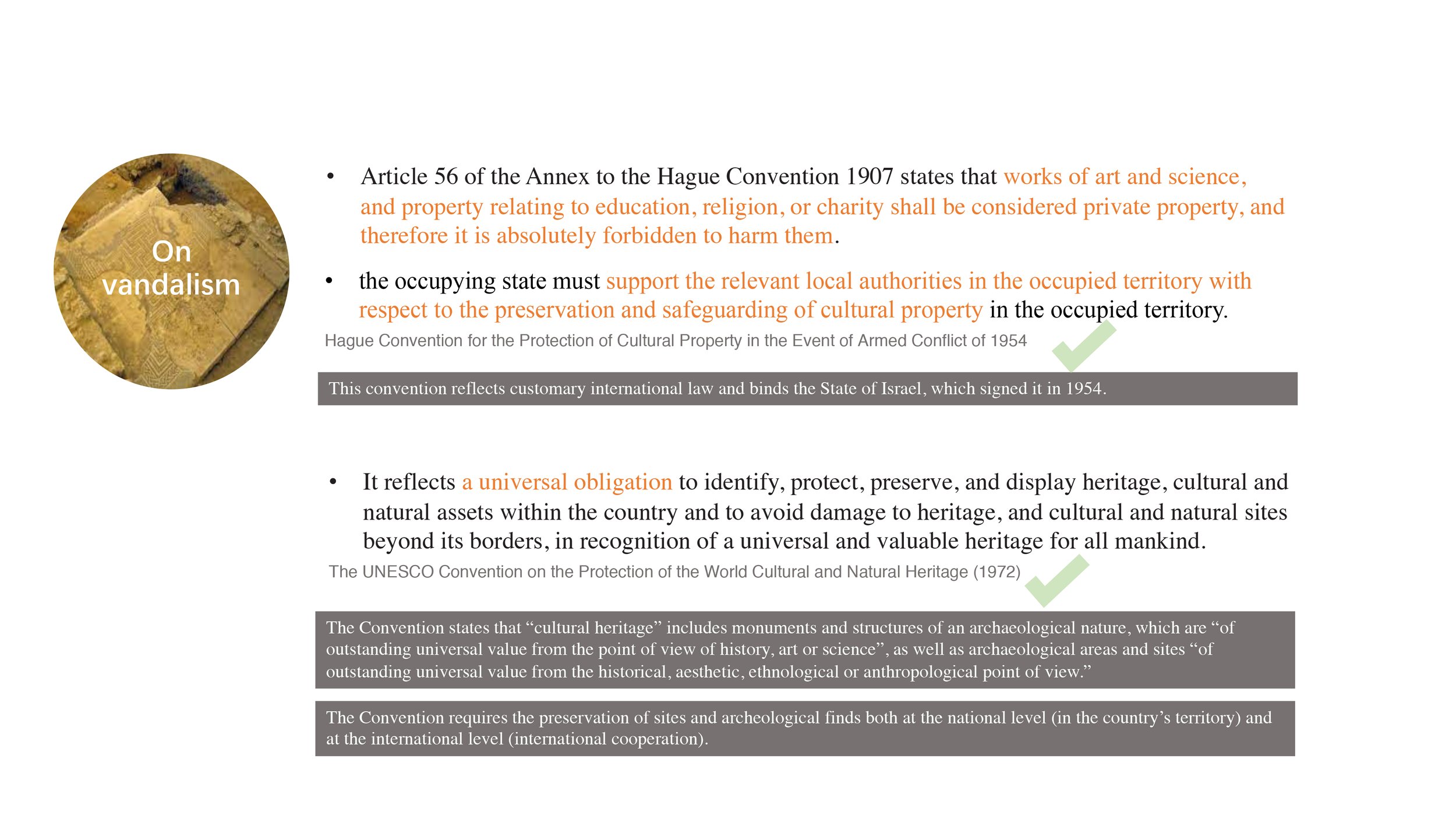Pauline Zhou
This research probes into the means of protection and preservation for archaeological sites in areas C of the West Bank, which is under Israeli occupation.
By reading Appropriating the Past-Israel’s Archaeological Practices in the West Bank from Israeli NGOs Emek Shaveh and Yesh Din, published with the support of the European Union, I came to be aware of the background information about the Israeli strategies for militarization over archaeology and its sites.
Looking into and analyzing the legislative documents relevant to archaeological preservation from legal systems of different levels, namely the international law, the domestic law in Palestine and the Israeli law, including the Interim Agreement signed by Palestine and Israel after the Oslo Accords, numerous issues became clarified. Early findings include the intimate relationship between the Archaeology Department of the Civil Administration and the Israeli authority in the West Bank under the Ministry of Defense. The project aims to explore this violent intimacy.
Sebastiya’s Bifurcation
Area C, Area B, Legal framework
Sebastia splited into different sections since 1993
Archeological sites found in Sebastia
The current state of archeological sites found in Sebastia
Between the violence and the condemnation from international community of the settlement, situation in Palestine became unsustainable. In the mid 90s, American prsident Bill Clinton, israeli prime minister Yitzhak Rabbin, Palestinian leader Yasser Arafat signed the Oslo Accords,agreements that establish the palestinian government and split the west bank into three sections.(Israeli settlements, explained | Settlements Part I )Here Sebastia is devided into 2 parts Area B and Area C. Area C contains most of the archeological sites and is under israeli occupation. Practice on Archeological Sites in Area C of the West bank under Israeli Occupation
Concluded study from Appropriating the Past-Israel’s Archaeological Practices in the West Bank.
Management of Archaeology in the West Bank & related Government Departments
Legislative Authority for Protection & Preservation of Archeological Sites in Area C of the West Bank
Here are Laws from legal systems of different levels. These are the main laws concerning archeological practice, which specific legal terms indicate the regulations on archeological excavation, remove of archeological finds etc.
The ticks indicate the conventions signed by Israel, green ones for ratified laws and red ones for not finalised legal documents.
Restrictions on Israeli practice on a legal basis
A Case Study on Return of archeological finds from Israel to Egypt
Israel‘s practice as an occupier on Archeology is against the general spirit of international laws, but it justifyies its actions by calling it salvage excavation, and holds its authority by claiming it has the right to determine relevant operations, as it has signed the Hague Convention to uphold the domestic laws of the occupied territory, and at the same time has amended the domestic laws , which is related to the Israeli military commander.
Emek Shaveh and Yesh Din, Appropriating the Past-Israel’s Archaeological Practices in the West Bank,December 2017

















